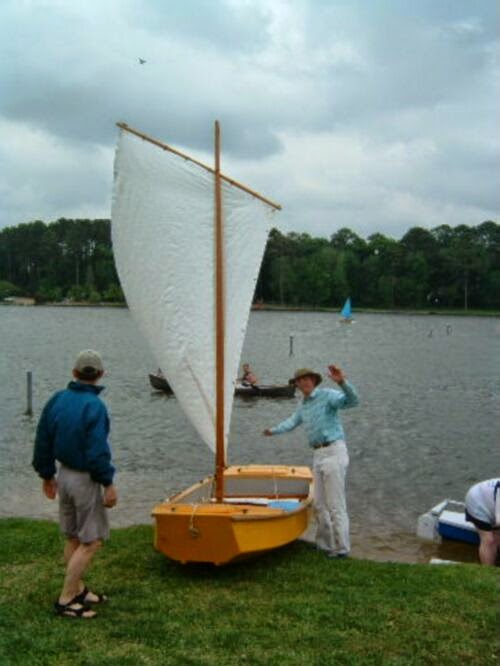Hoje foi um dia especial. Recebi 1 visita ilustre e outra nem tanto no estaleiro. Comecei os trabalhos pela limpeza. A chuvarada que caiu encheu a rua e a garagem de casa estava cheia de lama. Felizmente ficou só nisso pois se a água entra na casa pegaria os compensados ainda em estado bruto, o que iria atrasar bastante o projeto.
Mais no final da tarde o amor da minha vida foi pela primeira vez conferir a bagunça. Com a ajuda dela fizemos uma das atividades mais importantes de todo o projeto: verificar se o barco sairá pela porta depois de pronto. Um alívio saber que sairá com folga.
Today was a special day. I received one illustrious visit and another not so illustrious in the yard (hehehe). I started work for cleaning. The rain that fell floaded the street and garage house was full of mud. Fortunately
it was only that because if water enters the house would catch the plywood
still in the rough, which would delay the project for sure.
More late afternoon the love of my life was the first time taking a look at the mess. With
her help we made one of the most important activities of the entire
project: check whether the boat will leave the door after it's done. A relief to know that will come handily.
Como a foto já denuncia, terminei o Frame B (temporário) que é o frame de sustentação de toda a construção. É uma peça tão importante que vale um close só nele.
As the photo now denounces finished frame B (temporary) which is the frame supporting the whole building. It's a play so important that it is worth a close on it.
E como surgiu a oportunidade deste que vos fala ser devidamente registrado junto à obra em processo, dona patroa foi logo clicando, aliás, uma de suas atividades favoritas. Vejam a alegria do garoto ao ver o barco começar a tomar forma.
Opportunity arouse of yours truly be duly registered
with the work in process, and my beloved started shooting,
one of her favorite activities. Look at the joy of the boy seeing the boat taking shape.
Hoje fiz a junção do painel do fundo, completei o frame B, uni as laterais a ele fazendo a primeira atividade 3D do barco, colei as ripas dos frames A e C. No total, desconsiderando paradas para almoço, papinho rápido com as visitas e limpeza do estaleiro, devo ter gasto umas 5 horas de trabalho.
Na saída teve dedetização. Melhor prevenir e deixar os insetos longe da madeira.
Today I made the junction of the bottom, completed the frame B, mounted sides
making it the first 3D activity boat, glued the slats of frames A and C.
In total, excluding stops for lunch, quick chat with visitors and cleaning the yard, I have spent about 5 hours.
At the exit had extermination. Better safe and let the insects away from the wood.
Inté !












